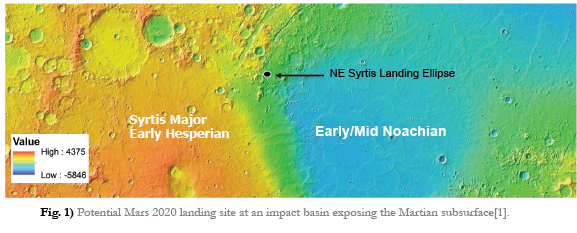Culturing The Deep Subsurface
Natalia Obrzut, Caitlin Casar, and Magdalena Osburn
.
| Abstract | The Deep Subsurface as a Martian Analog | Culturing The 'Unculturable' | Results | Contact |


“We posit that if life exists, or ever existed, on Mars or other planetary bodies in our solar system, evidence thereof would most likely be found in the subsurface.” -Jan Amend, NASA Astrobiology Institute
The surfaces of other planets in our solar system are likely inhospitable due to exposure to radiation and desiccation; however, subsurface environments may offer protection from these stressors and are potential reservoirs for liquid water and sources of energy that support microbial life [2]. The search for extraterrestrial life along subsurface exposures is therefore of interest to the astrobiology community [Fig. 1]. This project is part of the NASA Astrobiology Institute Life Underground initiative to detect and characterize subsurface microbial life; by characterizing the intraterrestrials, the life living deep within Earth’s crust, we aim to understand the controls on how and where life survives in subsurface settings. The terrestrial deep subsurface is limited in available organic carbon, oxygen, water, and other nutrients and is decoupled from solar energy input [3]. Cultivation of terrestrial deep subsurface microbes will provide insight into the mechanisms of survival carried out under these oligotrophic, energy limited conditions which are likely to exist on other planets [4].
The recently established Deep Mine Microbial Observatory (DeMMO) is a network of legacy boreholes intersecting fluid-filled fractures that host deep microbial life [4]. Fluids were collected from three sites spanning depths of 800-2000 feet under a range of geochemical conditions (Fig. 4). Phylogenetic data (Fig. 3) indicates the lack of cultured representatives within DeMMO communities. Here, we used geochemical data to guide media design to cultivate and isolate organisms from DeMMO communities.
References
[1] J. Mustard, B. Ehlmann, M. Bramble, K. Cannon, J. Head, J. R. Skok, T. Goudge, and E. “Amandor NE Syrtis: The Key to Unlocking the First 0.5 GY of Mars’ History” Feb 8. 2017.
[2] Michalski, J. R., Cuadros, J., Niles, P. B., Parnell, J., Rogers, A. D., & Wright, S. P. (2013). Groundwater activity on Mars and implications for a deep biosphere. Nature Geoscience, 6(2), 133-138.
[3] Lovley, D. R., & Chapelle, F. H. (1995). Deep subsurface microbial processes. Reviews of Geophysics, 33(3), 365.
[4] Osburn, M. R., Larowe, D. E., Momper, L. M., & Amend, J. P. (2014). Chemolithotrophy in the continental deep subsurface: Sanford Underground Research Facility (SURF), USA. Frontiers in Microbiology, 5
[5] NASA Astrobiology (2017). AbSciCon 2017 Day 2 Session 2 Magdalena Osburn.
[6] Osburn, M.R unpublished
[7] Osburn, M. R., & Amend, J. P. (2010). Thermogladius shockii gen. nov., sp. nov., hyperthermophilic crenarchaeote from Yellowstone National Park, USA. Archives of Microbiology, 193(1), 45-52.
Natalia Obrzut
Loyola University Chicago